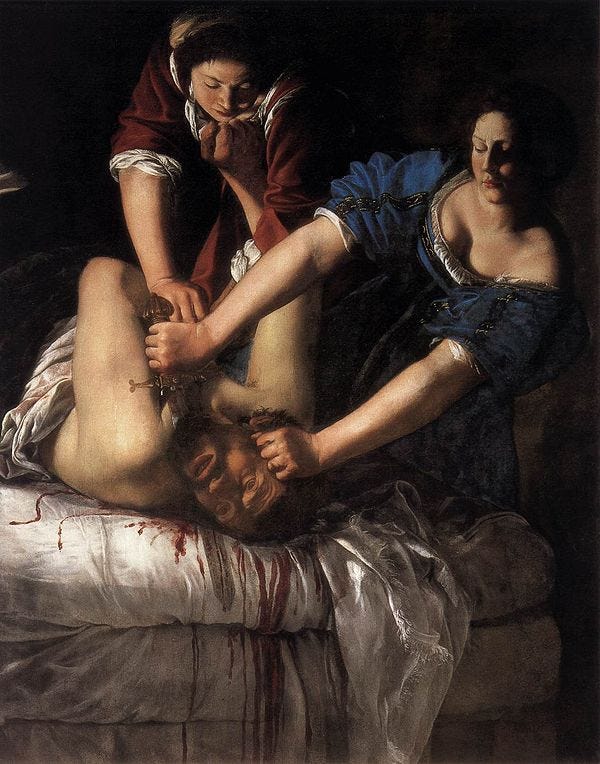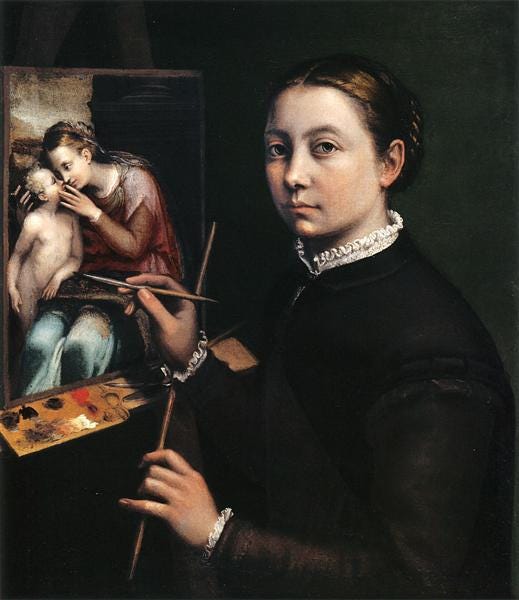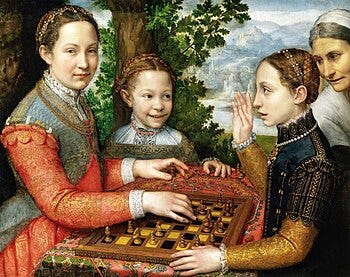The legacy of women artists in the Renaissance, Baroque, and Classical periods offers a critical lens into the intersection of gender, art, and history. Women were often excluded from mainstream art production due to societal restrictions that limited their access to formal education and professional recognition. Despite this, some women managed to break through these barriers and make significant contributions to the development of Western art.
During the Renaissance and Baroque periods, women were systematically excluded from the formalized networks of art production, education, and patronage. Professional guilds, which governed the arts in most European countries, generally barred women from membership, restricting them to domestic or decorative crafts (Landau, 2002). Art schools and academies, which were the centers of artistic innovation, often did not admit women, thus further limiting their training opportunities (Clark, 2000). Gendered perceptions of intellectual and physical ability kept women from engaging in the prestigious genres of history painting, which required intensive study of anatomy and classical themes (Garrard, 2002).
However, women from noble or wealthy families sometimes received private training, enabling them to engage with painting and sculpture, albeit often in socially acceptable genres like portraiture or religious depictions, which were viewed as appropriate for women. The academic exclusion of women was compounded by societal beliefs that women’s work in the arts could only be considered successful if it adhered to these limitations (McIver, 2007).
Despite the barriers to formal training and professional recognition, several women artists succeeded in making a lasting impact on art during the Renaissance and Baroque periods.

Artemisia Gentileschi is often considered one of the most important women artists of the Baroque period. Born into a family of artists, Gentileschi received early training in her father’s workshop, and later studied under the prominent artist Agostino Tassi. One of the most significant moments in her career came after a highly publicized trial for the sexual assault committed against her by Tassi. Despite the trauma, Gentileschi's work often depicted women in powerful, even violent, roles, reflecting both her personal experience and a broader feminist perspective (Garrett, 1997).
Works such as Judith Slaying Holofernes (1614–1620), which depicts the biblical heroine Judith decapitating Holofernes, are marked by intense emotion and dramatic chiaroscuro, influenced by Caravaggio. Gentileschi’s works challenge the traditional, passive representations of women in art, offering instead portrayals of female empowerment and agency. Though her work was initially overlooked or attributed to her father, recent scholarship has restored her reputation, recognizing her as a master of Baroque painting (Landau, 2002).


Sofonisba Anguissola, a pioneering Italian Renaissance portraitist, defied the gendered limitations of her time to achieve international acclaim. Born into an aristocratic family in Cremona, Anguissola was one of the few women to receive formal training in painting. Her self-portrait, Self-Portrait at the Easel (1556), demonstrates her skill as both an artist and a master of psychological realism in portraiture. Anguissola’s portraits, such as The Chess Game (1555), feature individuals with distinctive personalities, marking a departure from the standard stiff, lifeless depictions of the era.
Anguissola’s reputation extended beyond Italy. She served as a court painter to King Philip II of Spain, where she tutored the queen in portraiture. Her work played a vital role in elevating portraiture as a respected genre and allowed her to gain significant recognition during her lifetime, a rare accomplishment for a woman artist in the Renaissance (Rounding, 2006).

Judith Leyster, a Dutch Baroque artist, was a member of the Haarlem Guild of St. Luke, one of the first women to be admitted to the guild. Her genre paintings, particularly The Merry Company (1629), captured the lively, social interactions typical of the Dutch Golden Age. Leyster’s ability to combine humor, dynamic compositions, and emotive lighting set her apart from many of her contemporaries. Her works exemplify the everyday life of the period, portraying ordinary people in moments of celebration or contemplation.
Leyster’s talent was long overshadowed by her male contemporaries, particularly Frans Hals, whose works were similar to hers. Nonetheless, her inclusion in the Haarlem Guild and her ability to navigate the professional art world are important markers of her contribution to the Baroque era. It was only much later that her work was properly attributed to her, allowing for a reassessment of her place in the history of art (Vandever, 2002).
The obstacles faced by women artists in these periods were not only structural but also societal. Women were expected to conform to roles defined by domesticity, and their art was often dismissed as secondary to that of men. Art history in the Renaissance and Baroque periods was written largely by male scholars, who frequently overlooked the achievements of women artists (McIver, 2007). Moreover, even when women artists were recognized, their works were often attributed to male artists, further obscuring their contributions.
The lack of access to professional training and support networks, compounded by the expectation that women’s art should serve domestic or decorative functions, meant that many women artists had limited opportunities for public exposure. Women like Gentileschi, Anguissola, and Leyster succeeded despite these barriers, showing the extent of their talent and determination in an environment that was often hostile to their involvement in the art world (Clark, 2000).
The legacy of women artists like Artemisia Gentileschi, Sofonisba Anguissola, and Judith Leyster has been rediscovered and reassessed in recent years, allowing their contributions to be more widely recognized. This has been made possible through scholarly research and exhibitions, such as the Artemisia exhibition at the National Gallery in London (2020) and the retrospective on Leyster at the Getty Museum (1993). These initiatives have not only reestablished the significance of these artists but have also highlighted the ways in which their work transcended the limitations imposed upon them by their gender (Landau, 2002).
In addition, the feminist movements of the 1970s and 1980s, which sought to rectify historical imbalances in the representation of women in the arts, owe much to the recovery of these figures. These movements have reshaped the narrative of art history, encouraging a more inclusive approach that recognizes the contributions of women artists who were previously marginalized (McIver, 2007).
Women artists in the Renaissance and Baroque periods navigated a world that systematically excluded them from formal training, professional recognition, and the most prestigious genres of art. Yet artists such as Artemisia Gentileschi, Sofonisba Anguissola, and Judith Leyster managed to leave a profound mark on the history of art. Their ability to overcome these challenges and produce works of great emotional depth, technical mastery, and innovation ensures that their legacy endures. Contemporary scholarship and exhibitions continue to elevate their contributions, allowing for a fuller and more nuanced understanding of the role of women in art history.
References:
Clark, Kenneth. The Nude: A Study in Ideal Form. Princeton University Press, 2000.
Garrett, Alicia. Artemisia Gentileschi: The Artist Behind the Paintings. Thames & Hudson, 1997.
Garrard, Mary D. Artemisia Gentileschi: The Image of the Female Hero in Italian Baroque Art. Princeton University Press, 2002.
Landau, David. The Art of the Baroque Era. Harvard University Press, 2002.
McIver, Maureen. Women and Art in the Renaissance. Cambridge University Press, 2007.
Rounding, Virginia. Sofonisba Anguissola: The Renaissance Artist Who Refused to Be Forgotten. St. Martin’s Press, 2006.
Vandever, Laura. Judith Leyster: A Life in Art. The Getty Press, 2002.




♥️☀️☮️🌈🏁